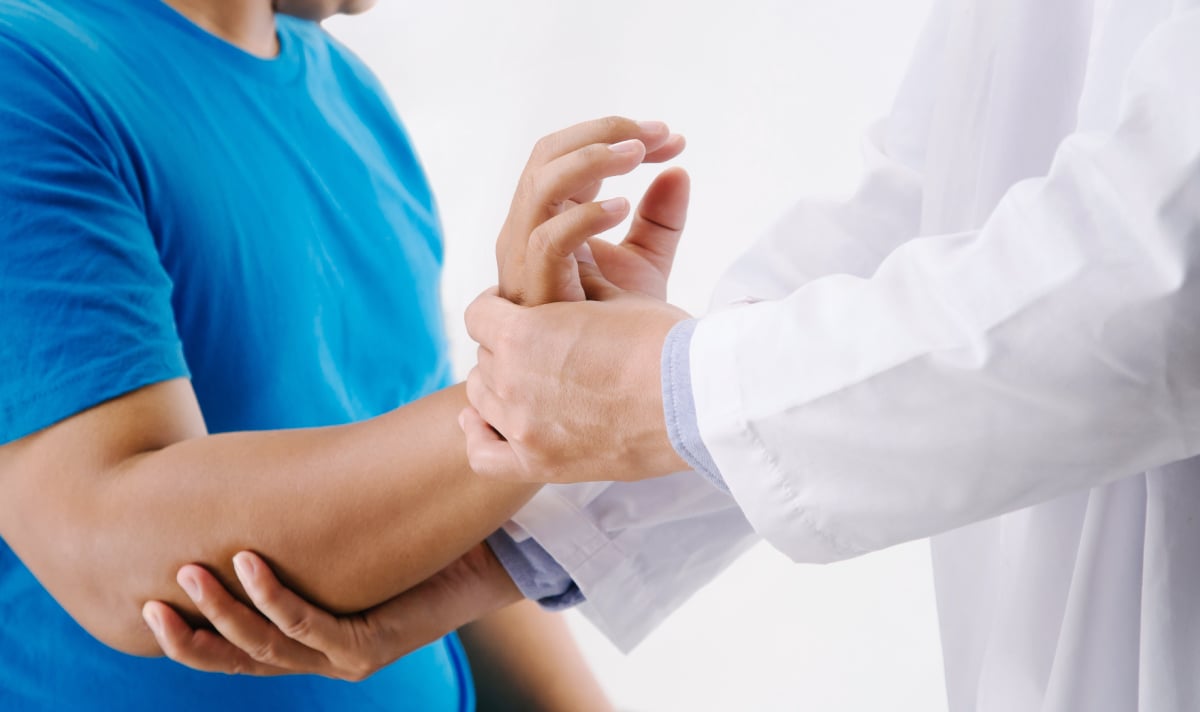Trigger finger can occur in people of all ages and genders. It is often caused by multiple factors such as repetitive use, aging, etc. Continuous strenuous hand use over a long period can cause pain at the base of the fingers while moving, bending, or extending, leading to trigger finger. It is more common in women than men, especially those who work with their hands all day without rest.
The Importance of Hands and Fingers
Hands are organs that are used daily and are constantly in motion. However, fingers are not used equally. The thumb is used the most, accounting for up to 40% of hand function because it can grip with other fingers. Next are the index and middle fingers at 20%, and the ring and little fingers at 10%. Pain at the base of the fingers can significantly impact daily life.
The Function of Tendon Sheaths
Tendon sheaths are located at each bone to allow tendons to pass through. Tendons are like trains, and tendon sheaths are like tunnels the trains pass through. When inflammation or swelling occurs, the tunnel cannot expand, causing friction between the tendon surface and the tunnel. Inflammation and fibrosis can occur on both sides of the tendon and tendon sheath.
What is Trigger Finger?
Trigger finger is caused by inflammation of the tendon sheaths and tendons at the base of each finger in the palm. When the tendon surface is injured, inflamed, and swollen (Injury and Inflammation), moving the finger becomes painful. Over time, inflammation leads to healing, causing fibrosis and scar formation (Fibrosis and Scar Formation). The scar tissue compresses the tendon sheath, increasing friction and causing repeated inflammation, swelling, and fibrosis, resulting in a narrower tendon sheath and trigger finger, which can occur in both hands.
Symptoms of Trigger Finger
- Pain at the base of the finger
- Snapping sensation when bending or extending the finger
- Inability to bend the finger; the finger cannot extend without help from the other hand
- Pain when moving the finger, grasping objects, or moving the finger quickly
- Trigger finger can occur along with hand numbness from nerve compression.
- Symptoms may include only pain at the base of the finger or both pain and finger locking (Triggering), especially in the morning.
How to Treat Trigger Finger
Trigger finger treatment is divided into 3 types:
- 1) Medication: Used in the early stages of trigger finger. Doctors prescribe pain relievers and anti-inflammatory drugs, along with behavioral changes in daily hand use.
- 2) Local Steroid Injections: Used for treating severe pain from trigger finger that does not respond well to medication.
- 3) Expanding the tendon sheath: Used for treating trigger finger that cannot bend or extend, and for which injection did not work or caused frequent recurrence.

Expanding the Tendon Sheath to Unlock Trigger Finger
Surgically expanding the tendon sheath at the base of the finger using special equipment inserted to cut and expand the sheath allows the tendon to pass through easily, reducing pain and improving movement. Local anesthesia is used, and general anesthesia is not necessary. The procedure takes about 1 hour, with a small incision of about 1 centimeter. No hospital stay or pre-surgery fasting is required. Normal hand movement is possible after surgery, but lifting heavy objects or strenuous exercise is prohibited. The stitches are removed after 1 week, and normal hand use can resume after 2 weeks.
Are There Side Effects to Steroid Injections for Trigger Finger?
Steroid injections for trigger finger involve injecting steroids at the site, not throughout the body. The injection relieves pain, reduces inflammation and swelling, and improves nerve function. Numbness gradually improves as the nerve repairs itself, with the drug dissolving completely in about 2 weeks.
How to Prevent Trigger Finger
- Avoid carrying or lifting excessively heavy items.
- Take breaks and stretch hand muscles regularly when using hands continuously for long periods.
- Avoid wringing clothes too forcefully or clenching the wrist tightly.
- Do not crack or snap fingers.
- Soak hands in warm water and gently make a fist if joints feel stiff.
Doctors Specializing in Trigger Finger Treatment
Dr. Nathapon Chantaraseno Orthopedic Surgeon Bangkok International Hospital
Hospitals Specializing in Trigger Finger Treatment
Bangkok International Hospital is prepared to treat trigger finger with a team of specialist doctors, multidisciplinary professionals, and modern equipment to restore normal hand use.
